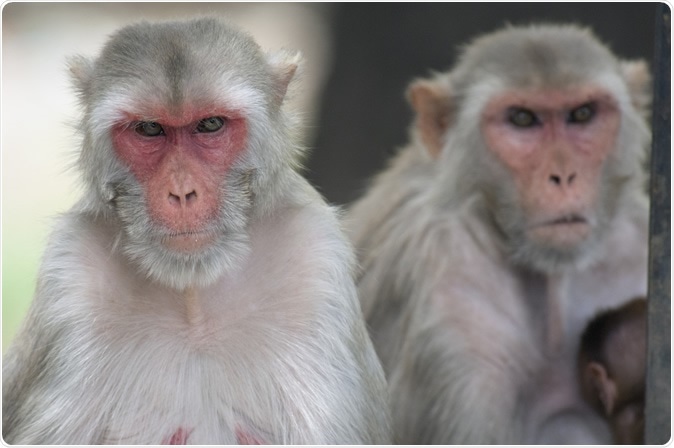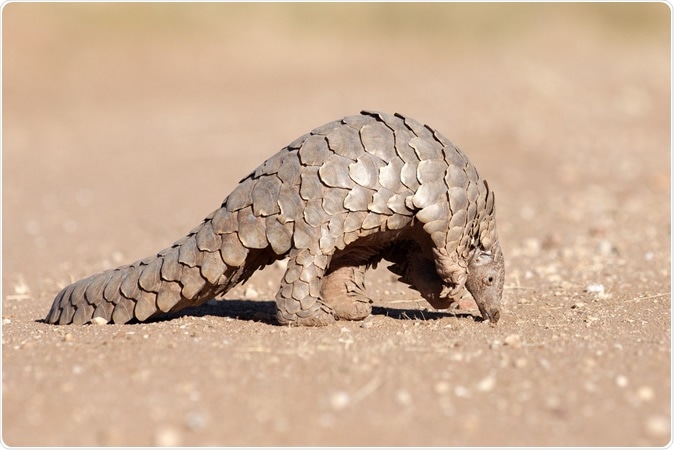The novel coronavirus 2019 has caused widespread infection across the whole world, beginning from China. It has now caused over 2.47 million cases and 170,000 deaths, as of April 20, 2020. The resulting control measures, as well as the healthcare preoccupation with the pandemic, has caused an alarming economic downturn, as well.
-1.jpg)
Novel Coronavirus SARS-CoV-2 Colorized scanning electron micrograph of an apoptotic cell (blue) infected with SARS-COV-2 virus particles (red), isolated from a patient sample. Image captured at the NIAID Integrated Research Facility (IRF) in Fort Detrick, Maryland. Credit: NIAID
Where did the virus come from?
The virus, called the Severe Acute Respiratory Syndrome Coronavirus 2 (SARS-CoV-2), is still a mystery in many ways. Nobody is sure where it suddenly came from. Some of the early patients had links with the Huanan seafood and wild animal market in Wuhan city, China, which led to the theory that the virus was one which was native to wild animals but jumped the species barrier by acquiring characteristics that allowed it to infect and replicate in humans successfully.
Sequencing studies show that the viral genome is closely related to that of the SARS-CoV (infecting humans), and various bat coronaviruses. The closest identity is with the bat virus CoV RaTG13, at over 96%, which indicates that the current virus probably came from bats.
In fact, bats have been the natural reservoir for a great many emerging viruses that spread from animal hosts to man, including the earlier human coronaviruses that caused SARS and MERS in 2002 and 2012, respectively.
The challenge is to find out through which intermediate hosts the bat virus ultimately spread to the human host, as it is unlikely to have occurred in a single step, seeing the species occupy widely separated environments. At least one other species must have served to allow the original virus to acquire some key mutations that improve the efficiency of zoonotic transmission to the human host, either as an intermediate or as an amplifying host.
Pangolins were thought to be the intermediate hosts; however, the degree of overlap between the pangolin coronaviruses and the human SARS-CoV-2 is less than 93%, suggesting the former is not the direct progenitor of the human virus.
Why is the ACE2 molecule important?
For a virus to infect a host, it must be able to recognize and bind to a suitable receptor molecule on the host cell. The presence of such a receptor is also key to which cell the virus tends to infect, the tissues to which it is attracted, and the disease process.
For the SARS-CoV-2 virus, the S protein is the chief attachment protein that binds to the receptor on the host cell membrane. This is split into two subunits, S1 and S2, at the furin cleavage site called RRAR.
The S1 subunit binds to the receptor during the process of cell entry and sets off the series of events that cause the S2 receptor to trigger cell membrane-virus fusion. The protein carries a receptor-binding domain (RBD) within itself.
This cleavage is not essential for the virus to fuse to the host cell membrane but is mainly for enhanced viral efficiency. In coronaviruses affecting other species, it increases the pathogenicity, enhances the fusion and makes the virus fitter. This furin cleavage site is absent in the SARS virus and other animal coronaviruses.
The human cellular receptor for both the SARS and the SARS-CoV-2 is the ACE2 (angiotensin-converting enzyme 2) protein. ACE2 in other species like the Chinese horseshoe bat and civet also fulfill this function.
How was the study done?
The current study aimed to investigate the receptor activity of ACE2 in 14 species of mammals. These were chosen as being either potential natural hosts for the SARS-CoV-2, intermediate hosts for the SARS-CoV, commonly used laboratory animals, or domestic pet animals.
The investigators used a pseudotyped HIV virus, expressing human ACE2 receptors. This virus was introduced to cell cultures transfected with empty vector or plasmids, which expressed one of four receptors: the human ACE2, ACE1, DDP4 for the MERS virus, or APN for another coronavirus.
Membrane fusion results in syncytia formation. This was also tested in an assay, which looked for the extent of membrane fusion resulting from the binding of the S protein to the human ACE2 receptor.
What did the results show?
The study showed that there were many animal ACE2 enzymes that were potential receptors for both SARS-CoV-2 and its mutant. The highest receptor activity was in the human and rhesus monkey ACE2 enzyme, and the lowest in the rat and mouse enzyme. The other ten had intermediate activity. Four of the ten (canine, feline, pangolin, and rabbit) had virus bound to more than half of the receptors.

Rhesus Monkeys. Image Credit: Jeannette Katzir / Shutterstock
Two days after mixing the pseudotyped virus with the cells, the researchers observed that only cells expressing human ACE2 allowed efficient virus entry. When the receptor was blocked by an antibody, the SARS-CoV-2 could not enter the cell, though the other coronavirus and the influenza virus could.
On immunoprecipitation assay, to test for receptor binding, the human ACE2, as well as the four most efficient receptors from the intermediate category, were found to be significantly and consistently associated with the S1 and the RBD parts of the virus.
The syncytia formation assay showed that only cells that express the human ACE2 receptor formed syncytia. The results show that the human ACE2 receptor is the entry point for the SARS-CoV-2 virus into the human cell.
Next, a mutant form of the viral genome was produced to eliminate the furin cleavage site (making it more similar to one of the bat CoV, SL-CoV CZ45). When pseudotyped viruses with the mutant S protein were allowed to infect cells expressing human ACE2 receptors, the efficiency of infection stayed the same or increased in all but three animal species. The pangolin-derived ACE2 now allowed virus entry as easily as the human ACE2.
The percentage of receptor use by the SARS virus was also tested among the 14 species. The poorest use was by the bat and rat ACE2 at less than a fifth of the human enzyme. Concerning the others, they allowed viral entry at over half the rate of the human ACE2, while for the rabbit and pangolin, the ACE2 had higher efficiency than the human ACE2.
Why do some ACE2 receptors not allow virus binding?
The researchers compared the sequences of the ACE2 protein, especially with regard to 23 critical amino acids that are closely related to the RBD of the novel coronavirus. They found no difference at any point between the human and rhesus monkey ACE2, while there were three unique substitutions in rats and mice. These could account for the low efficiency of the latter, they suggest, due to the resulting structural changes that inhibit the enzyme’s proper interaction with the receptor.
How is the study important?
The researchers say their findings have important implications in terms of identifying the natural reservoir, the spread of the virus across species borders, its transmission from humans to animals, and animal modeling of the virus. They suggest, “It is therefore reasonable to assume that SARS-CoV-2 would be able to infect all these animals.”
Pangolin CoV and one type of bat CoV are likely to be able to use both human and other animal ACE2 to gain entry into the host cells. Moreover, the SARS-CoV-2 virus can bind to multiple animal ACE2s even if the furin cleavage site is deleted. Thus, many of these wild animals can be natural hosts or intermediate hosts for the novel coronavirus and its progenitor.

A Pangolin hunting for ants. Image Credit: 2630ben / Shutterstock
Humans can also probably transmit the virus to their pet dogs and cats, and even more efficiently to pet rabbits. One Hong Kong pet dog was tested positive for a virus with only 3 nucleotide changes compared to the virus isolated from the two infected people in the same household. Owing to the theoretical possibility that the infected pets can spread the virus to healthy humans, the researchers say, “Out of an abundance of caution it would be best when one is infected to have both human and pets quarantined, and the pets tested as well.”
The results also have importance for scientists working with animal models. Transgenic mouse models were developed during the SARS epidemic, but these may be running short due to the drop in production after it subsided, and because of the increased demand for these models. Instead, the researchers suggest, given the high efficiency of the rabbit ACE2 receptors for both SARS-CoV and SARS-CoV-2, “it may be worth assessing rabbits as a useful animal model for further studies.”
Important Notice
bioRxiv publishes preliminary scientific reports that are not peer-reviewed and, therefore, not be regarded as conclusive, guide clinical practice/health-related behavior, or treated as established information.